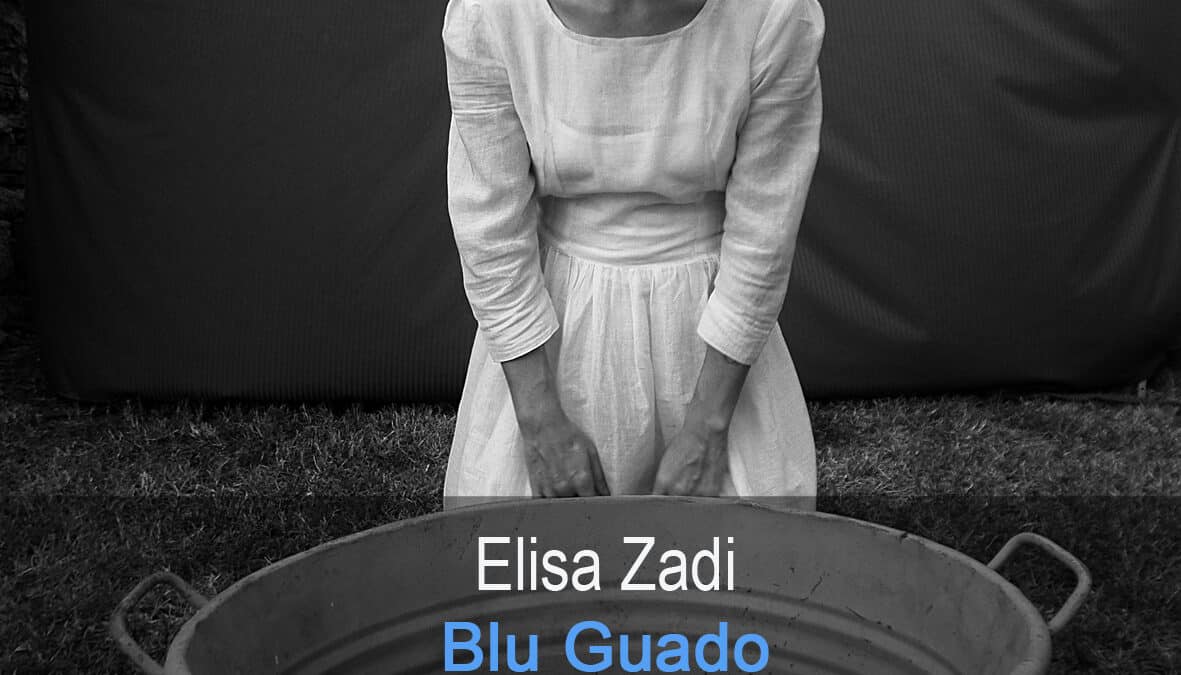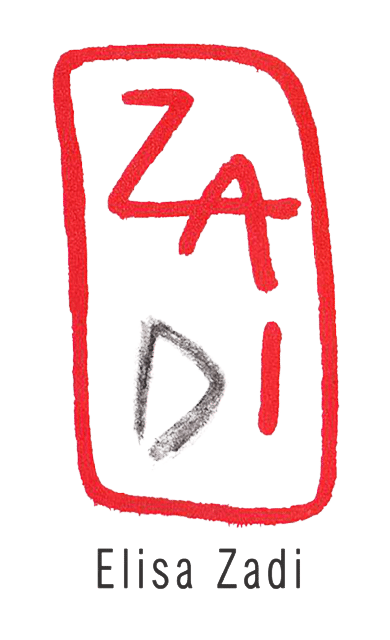
SAMSUNG CAMERA PICTURES
Blu Guado

“BLU GUADO” di ELISA ZADI
interactive installation ispired by the "Madonna del parto" di Piero della Francesca
The adventure of creating one, significantly entitled "Blu Guado", an installation-performative work belonging to a genre that is increasingly affecting and involving Elisa Zadi in his artistic career, is Stoic and suggestive fact that Piero della Francesca belonged to a family of dyers of fabrics: it is likely that the Renaissance master has used the same pigments for preparation of certain colors for painting.At that time, light-blue was taken from the Guado plant, very valuable for the careful processing it needed and that still remains as a rarity for a few enthusiasts. The peculiarity of the dye at Guado, compared to other plants, is that the colour of the fabric doesn't happen during boiling but gradually and rapidly with the preparation to the air: this fascinating metamorphosis for the artist was a find magical and symbolic, much to want to share it with an audience. The pattern of the dress specially created for "Blu Guado ", taken from the famous fresco of Monterchi, was adapted to the actual physical proportions of the artist, who has taken their bodies also to produce of the dummy, using direct cast in plaster, with a decided and reasoned sense of identification. Moreover, the light blue pigment manufactured by guado, chosen for the colour of the dress-sculpture, corresponds exactly to the shades of the dress of the Madonna di Piero, here played in three dimensions and installed on the appropriate length-mannequin.
"Blu Guado " consists of three elements: a large tent (which incorporates another key element of the iconography of Piero della Francesca), apparel-sculpture content n it (painting and sewing resuming faithfully fresco model) and a tub for the ancient technique of dyeing at the guando. The performance begins with the color of a great piece: the artist will go on her knees in front of the audience. "Blue Ford " consists of three elements: a large tent (which incorporates another key element of the iconography pierfrancescana), apparel-sculpture content n it (painting and sewing resuming faithfully cool model) and a tub for the ancient technique of dyeing at the guado. Guado and seeds and plunging pigment starting to pronounce sentences. Once it emerges from the water, the tissue is immediately hanging by a thread in front of the tent . While the natural miracle of oxidation starts to take the final coloring to the fabric, the artist, collocatasi behind it, with large scissors bisects the piece, and after having fastened the ends also opens the curtain, to create two symbolic consecutive openings. A succession of new gestures and phrases invites viewers to take the ritual taste step and to enter the tent. Participants will enter in the tent one at a time, and in the middle of it, they will find the dress-sculpture lighted from within. A physical and symbolic cut, anticipated by the fabric cut earlier, is reflected back into the open belly height vertically divided and dress. At this point, every viewer will take the "light" of this belly, "seeds" ( Guado or Calicantus) kept inside, will take themselves and bring them outside the tent, becoming, thus, responsible for the birth of future plants.
03 Settembre-La Barbagianna- una Casa per l’Arte Contemporanea, Pontassieve, Firenze.
Link al blog: http://zadielisa.blogspot.it/2016/08/blu-guado.html
Saturday 3 September 2016, from 17:00, at the "Barbagianna - a house for contemporary art" in Pontassieve, Elisa Zadi will present a preview of "Blu Guado", the new interactive installation inspired by the "Madonna del parto", a masterpiece universal by Piero della Francesca. After the long and demanding period of research for the realization of the work, the artist has happily accepted the invitation to present his latest creation during the day that marks the twenty-five years of activity of "Barbagianna - a home for the 'contemporary art". Upstream of Elisa Zadi's work there is an in-depth philological (as well as aesthetic) study of the ford pigment, used in the blue tinting technique in fabrics up to the sixteenth century, and of all the other construction phases. The adventure for the creation of what is significantly entitled "Blu Guado", an installation-performative work belonging to a genre that is increasingly interesting and involving Elisa Zadi in her artistic career, stems from the historical and suggestive fact that Piero della Francesca belonged to a family of fabric dyers: it is likely that the Renaissance master used the same pigments for the preparation of some colors for painting. At the time, the blue was obtained from the ford plant, very precious for the careful processing it required, and which still remains a rarity for a few enthusiasts today. The peculiarity of wading dyeing, compared to other plants, is that the coloring of the fabric does not occur during boiling but gradually and quickly with its spreading in the air: this fascinating metamorphosis was for the artist a magical discovery, symbolic so much to want to share it with an audience. The model of the dress specially created for "Blu Guado", taken from the famous fresco by Monterchi, has been adapted to the actual physical proportions of the artist, who also took his own body as a reference for the realization of the mannequin, by direct cast in plaster, with a strong and motivated sense of identification. So writes Marco Palamidessi in presentation: "in paying tribute to the genius of Piero della Francesca, the new artwork of Elisa Zadi, making itself an ode to fertility in courtly and broad, ranging from procreation to the genesis of art, celebrates a theme of fundamental importance, namely that of Supreme Act, gesture gesture, which is, in fact, birth, generate the create in all its ways, but especially artistically, that is with the mind and the hands. Come into the world the man, the idea, the universal concept, the works, the feelings and things. The artists, the real ones I mean, by means of their expression, are able to renew every day creating, know how to feel alive a world, ours, that was not done in an instant, but whenever there is superadded an artist worthy of the name. An installation, "Blu Guado" which wants to remind us that create is, perhaps, the highest way to feel alive: you create to be recreated continously what you do, to give birth to the sons called works, and of which the artists themselves are children themselves. A way for those who want to, to feel closer to the universe, for those who don't want to call him God. Every person who wants to start this adventure and share it first of all with the artist, the delicate task of collecting the seed direct from the womb that creates it, to bring it to a place, whether physical or mental, where will become fruit and new life. As "midwives", we will seize the seed germinates, making a comparison with a work that it, through its deep ritual, it invests the responsibility to be bearers of light, guardians of the primeval seed. protectors of life that continuously generates itself. And whoso keepeth the seed of creation is in turn himself artist-creator. Basically, "Blu Guado", is a work that reminds us that every day is one way to come into the world, that makes us grasp the idea that our womb, how our minds, should always be fruitful, of light, of seeds, of life .
With the patronage: Regione Toscana, Città Metropolitana Firenze, Comune di Firenze, Comune di Pontassieve
With the collaboration: MultiMedia91 Firenze, Archivio della Voce dei Poeti Pontassieve, Morgana Edizioni Firenze, Area N.O. Firenze, Harta Performing Monza, Archivio Carlo Palli Prato
01 Dicembre 2016 – Biblioteca Lazzerini, Prato.
Con la straordinaria partecipazione di Alessandra Borsetti Venier e Andrea Vannicola
Link al blog: http://zadielisa.blogspot.it/2016/11/blu-guado-prato.html
Ph Giovanna Sparapani e Marco Palamidessi












































